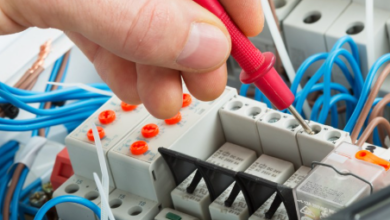
Why Does Your Safety Switch Keep Tripping at Night?
A safety switch is one of the most critical components in your home’s electrical system. Its job is to cut the power when it detects an electrical fault, such as a leak of current, to prevent electrocution and reduce fire risk. While it’s designed to protect you, it can be incredibly frustrating when the safety switch keeps tripping—especially in the middle of the night. If this happens repeatedly, it’s not something to ignore. There may be an underlying issue that requires the attention of a qualified emergency electrician.
Understanding why your safety switch trips can help you make sense of the situation and determine when professional help is needed. Night-time tripping isn’t always random. It often signals a specific pattern or cause.
Why It Happens at Night
Many people notice that their safety switch trips overnight, often when no one is using any obvious appliances. This can be confusing, but it usually points to appliances that continue to run silently in the background, such as refrigerators, dishwashers, water heaters, or even air conditioning units set to run on timers. These devices can develop faults that only become apparent after long hours of use or during specific cycles.
Another reason the issue arises at night is due to moisture. Evening air often brings condensation, and outdoor power points or wiring exposed to the elements might develop small leaks of current that trip the safety switch. An emergency electrician can test for these hard-to-spot moisture-related faults and seal or replace the affected equipment to prevent recurrence.
Overloaded Circuits or Faulty Appliances
In some cases, the problem lies with circuit overload. At night, you might have multiple devices operating at the same time—charging phones, running laundry machines, or operating heating systems. If too much current flows through the circuit, the safety switch may shut off power to prevent overheating.
Faulty appliances are also a leading cause. If one device has internal wiring issues, it could leak current. Even if that appliance is turned off, it may still be plugged in and drawing power. To isolate the culprit, try unplugging all devices on the circuit and plugging them back in one at a time. If the switch trips again when a specific item is reconnected, you’ve likely found the source. However, for a complete and safe diagnosis, it’s best to call an emergency electrician.
See also: Enhancing Business Efficiency with Electrical Solutions in Telford
Wiring Issues Hidden Behind Walls
Sometimes, the tripping isn’t caused by anything visible. Damaged wiring behind walls or under floors can cause leakage current that’s only detectable by the safety switch. Pests like rats or cockroaches can chew through wires, or the insulation may degrade over time. These types of faults are not easy to locate without professional tools and training.
An emergency electrician can perform insulation resistance testing and use thermal imaging or circuit tracing tools to detect faults deep within your electrical infrastructure. If left unresolved, these issues could pose a serious fire risk.
Weather and External Conditions
Weather can also affect your electrical system. Heavy rain, high humidity, or cold temperatures at night may influence external power points, garden lighting circuits, or outdoor appliances. Moisture getting into sockets or enclosures can trip your safety switch.
In these cases, an emergency electrician can weatherproof vulnerable areas of your home and ensure all outdoor circuits are properly protected with weather-resistant materials. They may also recommend installing separate safety switches for different zones to reduce the likelihood of your entire home losing power due to one outdoor issue.
The Importance of Timely Professional Help
If your safety switch trips repeatedly and you’re unsure why, you should not wait for the issue to worsen. Ignoring it may lead to a complete loss of power, electrical damage, or even fire. A qualified emergency electrician can identify the cause quickly and offer long-term solutions, whether that means repairing wiring, replacing old safety switches, or upgrading circuits.
Night-time issues can be especially inconvenient, and that’s when the availability of an emergency electrician becomes critical. They can respond quickly, even after hours, to restore power and ensure your home remains safe.
When to Call an Emergency Electrician
You should contact an emergency electrician immediately if your safety switch won’t reset, if power outages are frequent, or if you notice signs of damage such as burning smells, hot outlets, or flickering lights. These symptoms could indicate a deeper, potentially dangerous electrical problem that needs immediate attention.
It’s also wise to call an emergency electrician if the safety switch trips and you can’t identify which appliance or circuit is causing it. Guesswork can lead to missed faults or unsafe attempts at DIY fixes, which are never recommended.
Conclusion
A safety switch that keeps tripping at night is more than just an annoyance—it’s a warning signal. Whether the cause is a faulty appliance, overloaded circuit, moisture intrusion, or hidden wiring fault, it’s a problem that requires prompt investigation. While some homeowners may try to identify the cause on their own, the safest and most reliable solution is to call an emergency electrician.
A skilled emergency electrician can restore your power, diagnose the problem accurately, and offer peace of mind by ensuring your home’s electrical system is operating safely and efficiently. Don’t ignore the signs—your safety could depend on it.

